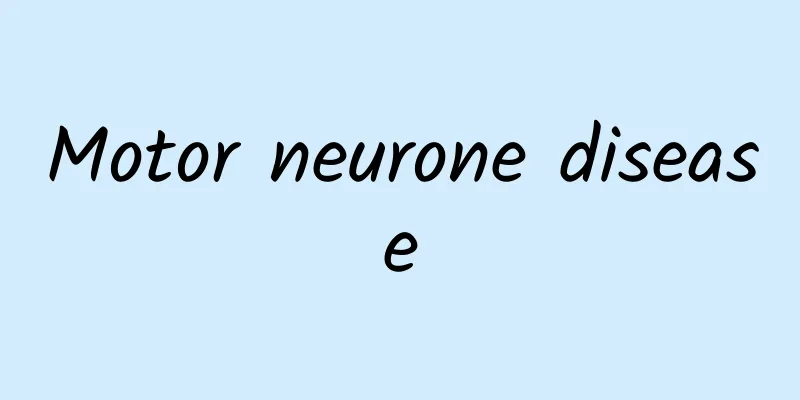Motor neurone disease

|
Do you know about motor neuron disease? I believe most people don’t know much about this disease, nor do they know what it is, let alone why they suffer from motor neuron disease. This disease is caused by lesions in the brain and nervous system. After suffering from the disease, the limbs will become weak and tight, and the body’s movements will not be so sensitive. This disease is common among middle-aged people. Motor neuron disease is generally hereditary. When understanding motor neuron disease, you need to understand its symptoms. Only by knowing its symptoms can you discover it as early as possible, so as to avoid the disease being left untreated and leading to many unnecessary consequences. 1. The clinical manifestations of the upper motor neuron type are limb weakness, tightness, and inflexible movements. Since the lesions often first invade the corticospinal tracts of the lower thoracic cord, the symptoms begin in the lower limbs and later spread to the upper limbs, with the lower limbs being more severe. The limbs are weak, the muscle tone is increased, the walking is difficult, the gait is spastic, the tendon reflexes are hyperactive, and the pathological reflexes are positive. If the lesion involves the bilateral cortical brainstem, symptoms of pseudobulbar palsy will appear, manifested as clear pronunciation, swallowing difficulties, and hyperreflexia of the jaw. This disease is called primary lateral sclerosis. It is rare in clinical practice. It usually starts in adulthood and generally progresses very slowly. 2. The lower motor neuron type usually presents clinically as weakness of the small muscles of the hands and gradual muscle atrophy, which may affect one or both sides, or start from one side and then spread to the other side. The palm becomes flat due to atrophy of the thenar and hypothenar muscles, and the hand becomes claw-shaped due to atrophy of the interosseous muscles. Muscle atrophy spreads upward, gradually affecting the forearm, upper arm and shoulder girdle. Muscle strength is weakened, muscle tone is decreased, and tendon reflexes are weakened or disappeared. Fasciculations are common and may be confined to certain muscle groups or widespread and are easily induced by tapping with the hands. In some cases, muscle atrophy starts from the tibialis anterior and peroneus muscles of the lower limbs or from the extensor muscles of the neck. In some cases, it may also start from the proximal muscles of the upper and lower limbs. 3. The mixed upper and lower motor neuron type usually presents hand muscle weakness and atrophy as the first symptom, usually starting from one side and then spreading to the other side. As the disease progresses, mixed upper and lower motor neuron damage symptoms appear, which is called amyotrophic lateral sclerosis. Generally, the lower motor neuron damage in the upper limbs is more serious, but the muscle tone may increase, the tendon reflexes may be active, and there are pathological reflexes. When the lower motor neurons are severely damaged, the symptoms of upper motor neuron damage in the upper limbs may be masked. In the lower limbs, the symptoms of upper motor neuron damage are prominent. In bulbar palsy, the tongue muscles atrophy and tremor are obvious, while the mandibular reflex is hyperactive and the sucking reflex is positive, indicating combined damage to the upper and lower motor neurons. In the late stage of the disease, muscles throughout the body become emaciated and atrophied, resulting in inability to lift the head, difficulty breathing, and being bedridden. The disease usually occurs between the ages of 40 and 60, and about 5% to 10% have a family history of the disease. The course of the disease progresses at varying speeds. After learning about motor neuron disease, you must pay attention if similar symptoms occur. If you have this disease, you should not be too stressed. You should seek timely treatment and do a good job of health care in your daily life. You should maintain the necessary nutrition, especially protein intake, eat a light diet, and keep a calm mind. |
<<: Is liver disease contagious?
Recommend
If the belt meridian is blocked, the lower abdomen will be fat
The so-called "belt meridian" refers to...
How to deal with caterpillar stings
Caterpillars are the larvae of moths or butterfli...
The dangers of varicose veins
With the development of economic life, people'...
Tumor in waist
We have all heard of tumors in the organs of the ...
How to treat mastitis lumps?
Mastitis lumps can cause great impact and pain to...
The main symptoms of hemorrhoids
Speaking of hemorrhoids, this is a very common di...
What is ultrasound inflammatory hydrocele?
Reproductive health is an issue that people take ...
Menstruation comes one week earlier every month
If your period comes a week earlier every month, ...
Can I eat Panax notoginseng if I have Qi and blood deficiency?
Deficiency of both Qi and blood is a problem that...
What to do if a child has blisters on the tip of his tongue
When a child develops blisters on the tip of his ...
Thyroid hormone
Thyroid hormone is a hormone secreted by the thyr...
Vulvar itching during 5 months of pregnancy
Even if women should pay attention to the health ...
Can you get pregnant while having your period together?
We all know that every girl will have menstruatio...
What are the effects and functions of golden cherry
Golden Rosa rugosa is a health food with high nut...
Diseases caused by obesity
Due to the fast pace of life and the improvement ...









